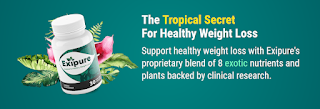
April 19 (UPI) — Using an online program that provides easily accessible, interactive, tailored healthy lifestyle and behavior change counseling improves health-related quality of life among adult stroke survivors, a study published Tuesday found.
Stroke survivors in the study given access to the online program call Prevent 2nd Stroke had higher scores on an assessment of health-related quality of life, data published Tuesday by the journal PLOS Medicine showed.
Prevent 2nd Stroke is intended to encourage users to set goals and monitor progress across various health risk areas, including tobacco use, alcohol use, physical activity, diet, mental health and blood pressure, the researchers said.
“Connecting stroke survivors with information on how to manage health behaviors associated with risk for secondary stroke has a positive impact on their overall health,” study co-author Ashleigh Guillaumier told UPI in an email.
“Online platforms are a viable and impactful model to address the health information needs and behavior change challenges of stroke survivors,” said Guillaumier, a post-doctoral research fellow in medicine and public health at the University of Newcastle in Australia.
People who suffer strokes and survive can experience physical and cognitive disability, according to the National Institute on Aging.
However, leading a healthy lifestyle — including limiting or eliminating alcohol and tobacco use, engaging in regular physical activity or exercise and eating a balanced, nutritious diet — has been shown to improve post-stroke quality of life and reduce the risk for future strokes, the institute says.
Proactive treatment of mental health disorders such as depression and anxiety after a stroke also helps, it adds.
The online platform Prevent 2nd Stroke allows users to users to view educational modules that provide tools to help guide them toward making healthy lifestyle choices and to set and achieve goals for with regard to exercise, body weight and blood pressure, among other factors, Guillaumier said.
The program’s modules include the latest “evidence-based information” that is “appropriate to stroke survivors,” delivered primarily by “pre-recorded videos from health practitioners,” she said.
For this study, Guillaumier and her colleagues enrolled 356 adult stroke survivors and provided them either with a list of generic health information websites or 12 weeks of access to Prevent 2nd Stroke.
The group with Prevent 2nd Stroke access received additional text messages encouraging use of the program, the researchers said.
After six months, participants given access to Prevent 2nd Stroke had higher scores on an assessment of health-related quality of life — or their daily mental and physical well-being — than those who were not, the data showed.
Prevent 2nd Stroke users had average scores on the 100-point assessment in the mid-80s, compared to the upper 70s or low 80s among non-users, the researchers said.
Users of the online platform also were more than twice as likely to report having no problems with personal care and 66% more likely to participate in their usual daily activities, according to the researchers.
The platform, which was developed by a team of stroke experts, survivors and others during eight years of research, still needs to be tested in larger studies before it is made available to the public, they said.
“Stroke survivors testing the program found it easy to use,” Guillaumier said.
It enabled them “to set goals related to the health behavior and track their progress,” she said.
from WordPress https://ift.tt/h8Lt2OP
via IFTTT










No comments:
Post a Comment